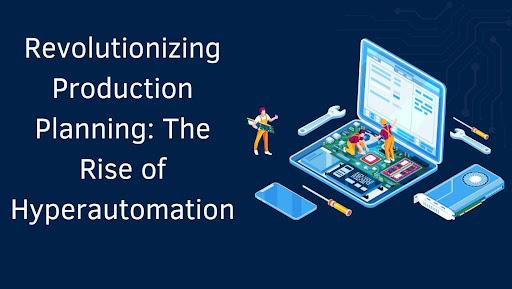Revolutionizing Production Planning: The Rise of Hyperautomation
Hyperautomation is redefining the manufacturing landscape with its transformative potential. As described by Karthik Sai Chennathis approach combines advanced technologies like Robotic Process Automation (RPA), Artificial Intelligence (AI), Machine Learning (ML), and Process Mining to revolutionize production planning systems. This article explores the core innovations driving this paradigm shift and their implications for the future of manufacturing.
A New Era of Automation
Hyperautomation transcends traditional automation by seamlessly integrating diverse technologies to optimize entire production systems. Unlike isolated task automation, hyperautomation delivers a unified ecosystem that enhances efficiency and decision-making. In production planning, AI-powered predictive models analyze historical data to accurately anticipate demand fluctuations, enabling proactive adjustments. Simultaneously, RPA bots efficiently manage repetitive tasks, accelerating processes and minimizing human errors. This harmonious collaboration of technologies ensures agility, empowering organizations to adapt dynamically to shifting market demands and maintain competitiveness. By bridging gaps in operations, hyperautomation sets a new benchmark for streamlined, intelligent production workflows.
Enhancing Operational Efficiency
Hyperautomation offers unparalleled efficiency gains, transforming production processes by streamlining key operations. Automated scheduling and resource allocation have enabled manufacturers to achieve 25–40% reductions in lead times, drastically improving turnaround times. AI-driven resource utilization enhances productivity by up to 30% while significantly reducing waste. Process Mining tools complement these efforts by identifying bottlenecks and optimizing workflows, ensuring seamless operations. This synergy of advanced technologies allows businesses to achieve higher output with fewer resources, maximizing operational effectiveness and delivering substantial cost savings key factors in maintaining competitiveness in a fast-paced industrial landscape.
Transforming Accuracy and Forecasting
A defining feature of hyperautomation is its remarkable capacity to improve accuracy in production processes. By leveraging AI and ML models, manufacturers achieve exceptional precision in demand forecasting, with error rates reduced by up to 40% compared to conventional methods. These technologies also optimize inventory levels, ensuring an ideal balance between supply and demand while minimizing overproduction and waste. This enhanced accuracy reduces disruptions in operations, leading to smoother workflows and improved customer satisfaction an indispensable advantage for manufacturers striving to excel in competitive markets and meet evolving consumer expectations effectively.
Real-Time Insights for Better Decisions
Hyperautomation leverages advanced analytics to deliver unmatched real-time insights into production processes. By integrating predictive maintenance powered by AI, it identifies potential equipment failures before they occur, cutting unplanned downtime by 25–45%. Additionally, dynamic resource reallocation ensures assets are utilized efficiently, adapting to changing production demands. These actionable insights reduce costly delays, enhance operational continuity, and significantly improve decision-making speed and accuracy by up to 25%. This level of intelligence empowers manufacturers to optimize processes and maintain peak efficiency in a competitive and ever-evolving industrial landscape.
Driving Ethical Implementation
While hyperautomation delivers transformative benefits, its implementation requires a strong ethical foundation. Practices like ensuring data privacy, addressing algorithmic bias, and fostering transparency are critical for building trust. However, only a small fraction of organizations have prioritized these measures, risking challenges in adoption. Emphasizing responsible AI use is not only essential for mitigating risks but also for ensuring sustainable growth and widespread acceptance of hyperautomation innovations.
Unlocking the Industry 4.0 Potential
Hyperautomation is a cornerstone of Industry 4.0, enabling a smarter, more connected manufacturing environment. By harnessing its capabilities, organizations can achieve significant productivity gains, ranging from 25–40%, while cutting costs by 15–25%. These technologies not only future-proof operations but also position businesses to thrive in a rapidly evolving digital economy.
In conclusion, as Karthik Sai Chenna aptly observes, hyperautomation represents a transformative shift in production planning. Its potential to enhance efficiency, accuracy, and agility is unmatched, making it a critical asset for the manufacturing sector. Embracing this innovation responsibly will pave the way for a more sustainable and competitive future.


Comments are closed.